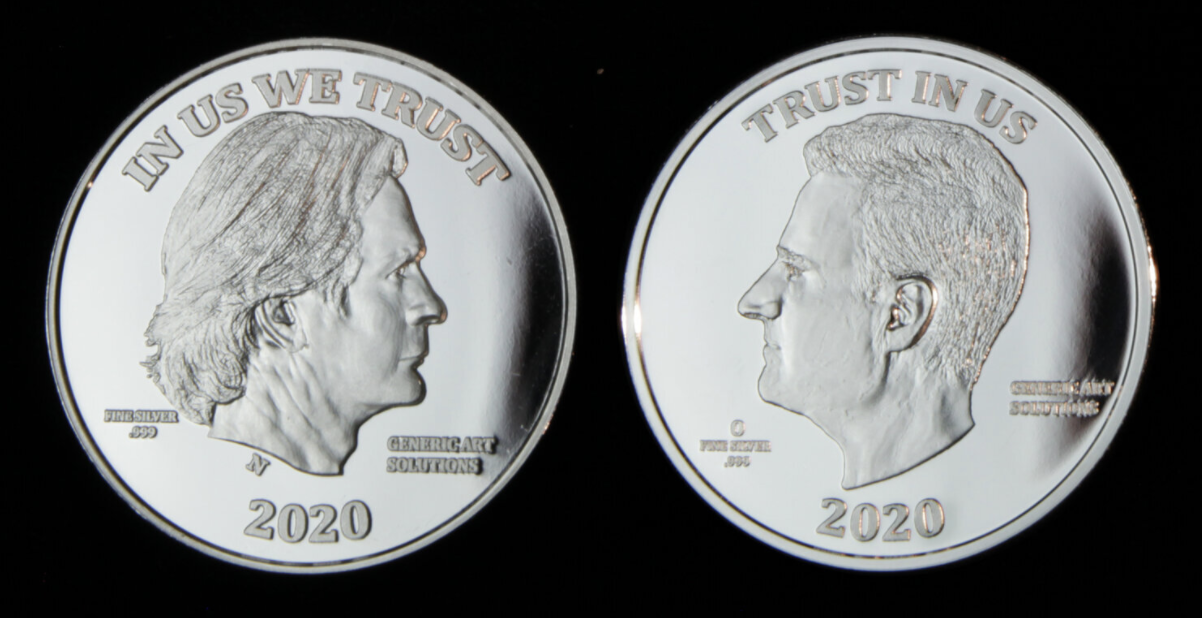Prospect. 4 Brings Yoko Ono to New Orleans

With six words, Ono reminds New Orleans of her credentials as a conceptual artist.
The side of the Ogden Museum of Southern Art bears a large white rectangle with a single, black, horizontal line, and under it, a line that reads, “HAVE YOU SEEN THE HORIZON LATELY?” and under that, “YOKO ONO 2017.” It’s one of two Ono pieces up in New Orleans during Prospect. 4, and both bear the same line, one that is a slight variation on the song title, “Have You Seen a Horizon Lately” from 1973’s Approximately Infinite Universe. In the song, Ono sings
Have you seen a horizon lately,
If you have, watch it for a while.
For you never know,
It may not last so long.
The verse reads like a poem from Ono’s 1964 book, Grapefruit, which contains a series of short, conceptual, poem-like instructions. and it sounds a note of impermanence that isn’t obvious in the line alone. Knowing the line’s source isn’t crucial to its success as a piece of public art, though. The piece has become an Ono classic and the title of a book on her work because it functions so effectively as a piece of conceptual art.
“HAVE YOU SEEN THE HORIZON LATELY?” provokes a series of responses that slowly grow to coalesce and take on the size and weight of an object in your mind. It’s a yes or no question, but when asked, it’s hard not to feel like you’re being told to look. Why do I need to look at the horizon? Is there something I’ve missed? A thing to see I never saw before? Are we talking about the actual horizon or a metaphorical horizon? Does this have something to do with history? The horizontal line above the question doesn’t go to the edges of the piece—does that imply something about our horizon? My horizon? Do we have different horizons?
Adding “lately” to the question seems to imply that something’s different now from the last time you looked at the horizon. What if anything changed? When did it change? Was it an imperceptible change, or did I sleep on something?
Since I connect the horizon with wide open spaces, the question points toward the natural world and brings to mind the damage we’re doing to it, but it’s also possible to think about it as a city person and realize that you almost never see the horizon because it’s blocked by the buildings around you. What’s lost if you don’t see the horizon? Did you realize how rarely you see it?
The horizon has historically been associated with the future. The next thing is just over the horizon. Has that changed? Has the future changed? Is it going to be a good change or a bad change? What changed it?
“HAVE YOU SEEN THE HORIZON LATELY?” is a very simple question, but it opens a rabbit hole that is itself approximately infinite. The black lettering on the white background doesn’t nudge you to think about the question with any particular shading. The all caps could give the line urgency, but maybe they simply make it readable. Does “YOKO ONO 2017” at the bottom serve as a signature even though it’s lettered in the same font as the question? Is it part or the art or does it serve as a brand, like a Nike swoosh? And does that brand affect how you think about the question? Is Ono a survivor, a charlatan, or something different? If so, what? It’s now hard to imagine how visceral the hostility toward her was after the break-up of The Beatles (Here’s a Nick Tosches review for a taste), but for decades, it was a given that Yoko was at least manipulative and divisive. Is she the same person 40 years after the break-up of The Beatles? Fifty years after Grapefruit? Are you the same person you used to be? And if you blamed The Beatles’ break-up on her, is it because she did it, or because you didn’t want to blame it on the band?
Time has been kind to Ono the artist. The avant-garde seems less radical in the rearview mirror, and as the physical touch of the artist’s hand has receded in importance, Ono’s art of the mind is easier to accept. “HAVE YOU SEEN THE HORIZON LATELY?” is certainly more efficient than her writing in 1964. Today, “Whisper your dream to a cloud. / Ask the cloud to remember it” is just too ethereal to live, but a gesture that psychedelic once represented genuine—albeit soft—confrontation. At the time, the Grapefruit pieces encouraged readers to explore and develop their zen. The piece on the side of the Ogden gets to business, perhaps because we’re living in an age when we don’t have time to fool around with talking to clouds.






